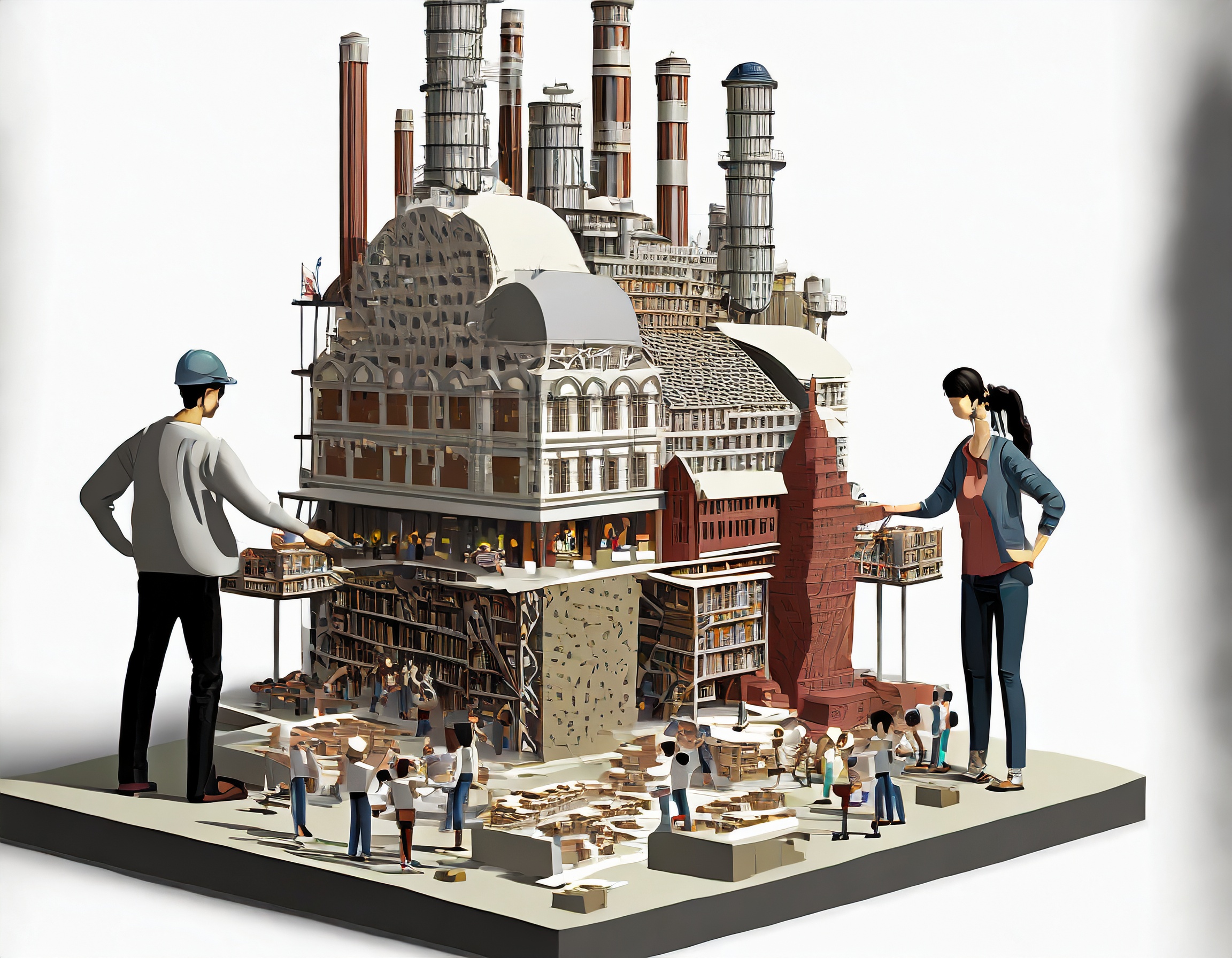
The Lankes Corollaries
The following article was published in Access: An International Journal of Nepal Library Association. I have recreated it here…and enhanced it a bit (it was published with a creative commons license). To cite it, please support my colleagues in Nepal:
Lankes, R. D. (2023). The Lankes Corollaries . Access: An International Journal of Nepal Library Association, 2(01), 200–208. https://doi.org/10.3126/access.v2i01.58999
Abstract
This piece explores a series of corollaries to Ranganathan’s five laws of librarianship. These corollaries talk about how librarians work with communities to ensure that service is shaped throughout the community. Such shaping moves libraries away from some pre-determined standard model, and into hyperlocal organizations ultimately facilitating knowledge creation.
Keywords: Ranganathan, laws of librarianship, community librarianship, new librarianship, neutrality
Introduction
In 1931 S. R. Ranganathan proposed 5 laws of librarianship (Ranganathan, 1931):
- Books are for use
- Every person his or her book
- Every book its reader
- Save the time of the reader
- A library is a growing organism
While others have tried to expand/revise/or update them (Gorman, 1998, Simpson 2008), the originals stand up. Clearly today we would expand books to resources and even services (e.g., services are for use) and readers have become members or just “people” – as we see that the library is a part of a person’s life – hopefully a significant part.
However, Ranganathan was clearly being aspirational: what we want to be, not so much how we get there. What I propose are 5 corollaries to the laws–guide post for library workers and organizations to achieve these lofty goals:
1. The mission of librarians is to improve society through facilitating knowledge creation in their communities
2. To be a librarian is to be a radical positive change agent with your community
3. A room full of books is a closet, but an empty room with a librarian serving their community is a library
4. Bad libraries build collections, good libraries build services, great libraries build communities
5. A library should be a safe space to explore dangerous ideas.
A few notes on language. Communities are not just about public libraries, or the generally acceptable services in an academic library. A community is a collection of people around some common aspect such as where they live, where they study, or where they work. It is also defined by how that collection of people parse out scare resources like land, taxes, tuition, and so on. So, a university is a community of faculty and students. A public library serves a community of citizens. A law library serves a community of lawyers (Lankes, 2008 pg. 58).
The other important piece of vocabulary is what we call individuals in our communities. Abstracting the people who are part of the library service population to users (phrases used by drug dealers and computer scientists) or worse customers (evoking a transactional relationship between a consumer and a producer) flattens our perception and the rich lives they lead. A person uses a library to read and write. They seek sanctuary and intellectual challenge. People seek meaning; customers seek products. A library is not just a service tacked onto a community; it is the people. The people who pay for it (taxes, tuition, overhead), who participate in it (lecture, workshops, governance), and ultimately define its shape (a unique mix of intellectual stimulation, educational opportunity, economic development, child rearing, adult education).
The terms a community uses within itself is up to the community. In academia most communities are comfortable with faculty, students, and staff (Bechtel, 1986). In school environments, students and teachers. Perhaps your community is OK with customers. However, the term we use among library staff and within the profession matters. If we see our communities as populations of consumers, we will be looking for ways to increase usage; value will be measured in transaction number and size; and we will be apart from them.
I prefer “member”, as in member of the community. I got this from the great Joan Fry Williams who did the unthinkable – she went onto the floor of the library and asked. The response? Member. They had cards after all and pay membership fees (taxes, tuition, etc). They belonged. It is an experiment and a result that I have replicated numerous times (see more in Pundsack, 2015).
To be clear, member is not perfect. To be a member implies there are non-members, or that the participation with the library is exclusionary. But it is the best I’ve found, and we do work really hard to remove barriers to membership.
These corollaries and focus also look past the monolithic term of “library.” It includes the people who make things happen: librarians. The corollaries recognize that libraries as generic institutional catch-alls need more focus. Let us briefly take a look at the corollaries one by one.
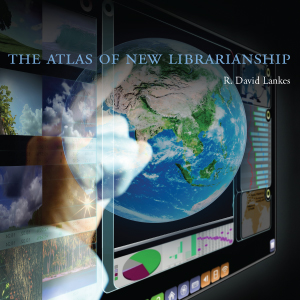
The mission of libraries is the central concept in The Atlas of New Librarianship.
The Mission
The mission of librarians is to improve society through facilitating knowledge creation in their communities
A few things to note about this corollary. First it is about the mission of librarians, not an institution. This is what a librarian tries to do working in a library, a private firm, or as a consultant: improve society…mostly through improving communities (more on the mission of librarians can be found in Lankes, 2011).
The second thing to notice is that the mission has two parts: the objective to improve society, and the means to do it, facilitation of knowledge creation. Or more simply, librarians make the world better through learning.
Note, librarians make things better not through books (though we use books as tools) or buildings (though we know that in many communities having a physical place or 3rd space is invaluable see Elmborg, 2011), but through orchestrating learning. We may create systems of shelving for books to do this. We may license databases. We may build beautiful and inspiring places. But all of these are tools to the ultimate mission of helping members learn and find meaning.
It is because this mission opens up so many ways in which a librarian can fulfill their mission, that part of our role as librarians is choosing from all the possibilities to find the right fit to the local. Makerspaces can fit, podcast studios can fit, lending fishing poles, creating outdoor story paths, dance lessons all fit this mission. The problem is not trying to define a library by its function (impossible because the functions can be as numerous as the communities served), but building a focus around your unique community.
Not Neutral
To be a librarian is to be a radical positive change agent with your community
Picking what tools and services a community needs is not a neutral act and it never has been. Before the 1970s public libraries wouldn’t carry paperbacks. Before the 1910s many didn’t carry novels (Wiegand, 2017). Before that public libraries didn’t carry fiction at all. Libraries have always depended upon specialists to use limited resources to best meet both the needs and aspirations of the community. That is not a neutral act. Ranganathan might have written EVERY book its reader, but in reality, no library can collect EVERY book (or DVD, or 8mm film, or database subscription, or large print edition, etcetera, etcetera, etcetera).
That’s obvious, but this corollary is more than a recognition of the obvious, it is about action and activism. Librarians are people of action; actively seeking to make a better society one community at a time. An example from Gusan-dong Village Library, South Korea to illustrate the point (Desmond, 2019).
Gusan-dong is a community in the vast metroplex that is Seoul. Community members, many single mothers, petitioned their local government to create a library. Then the citizens of the area created their own library school to plan the library through visits, invited speakers, shared readings. A library school still going to transform citizens into reading activist by the way.
The library itself was constructed from existing buildings no taller, no grander than the apartments around them. In the library, the foot print of former homes preserved, you find everything from self-published works to collective governance. A large collection of comics, eschewed by many existing public libraries, now a central collection to match the interest of children.
The library was formed out of activism. The librarians are trained and housed in the community, brought into the activist spirt that created the library. Their collection of comics was an act of defiance against norms in neighboring libraries. Their architecture was a statement not on how grand a library can be, but on how much the library was a part of the community. None of this is neutral. All of this is about focus, in this case on a place, and ensuring it works best for that community.
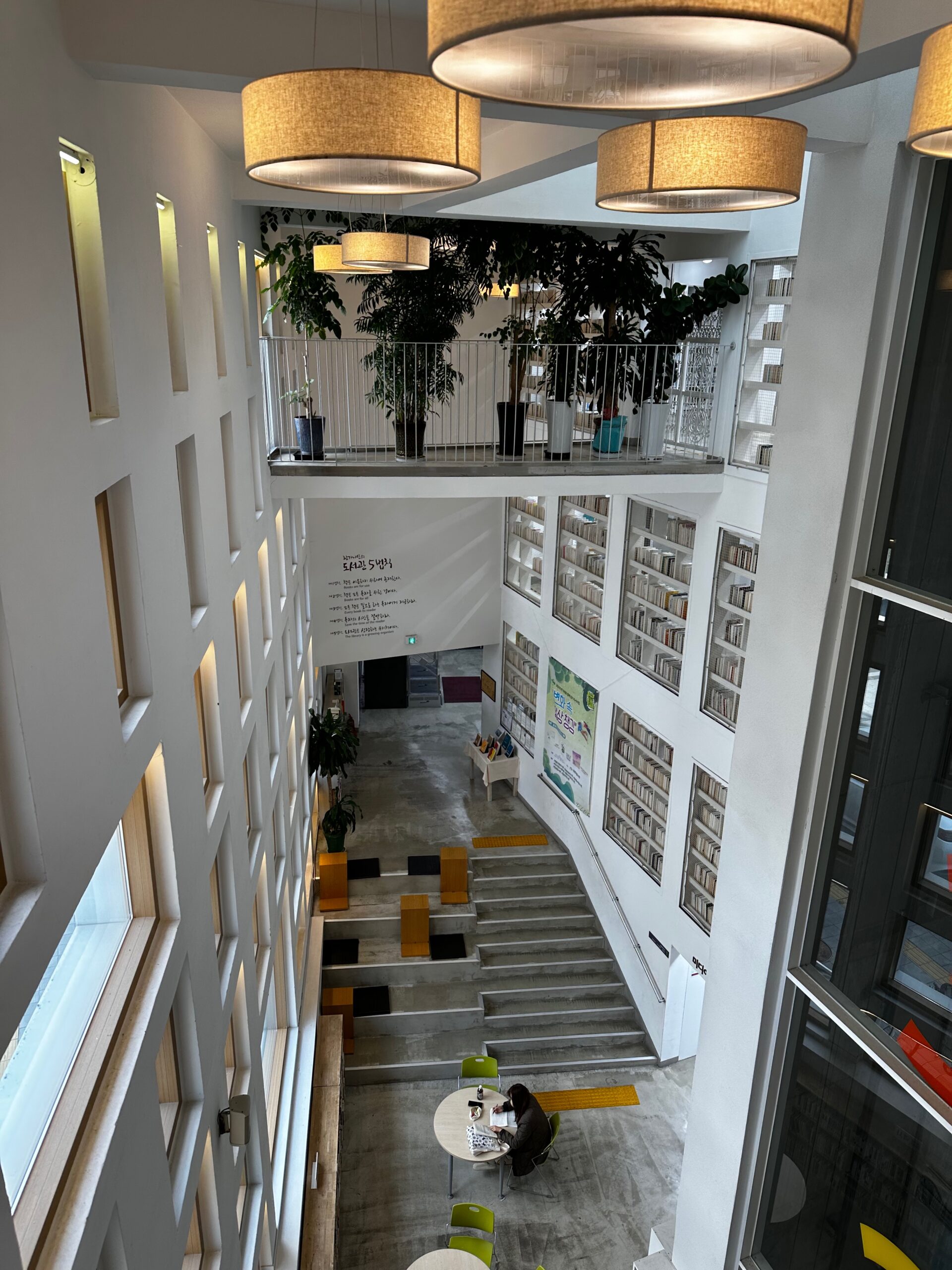
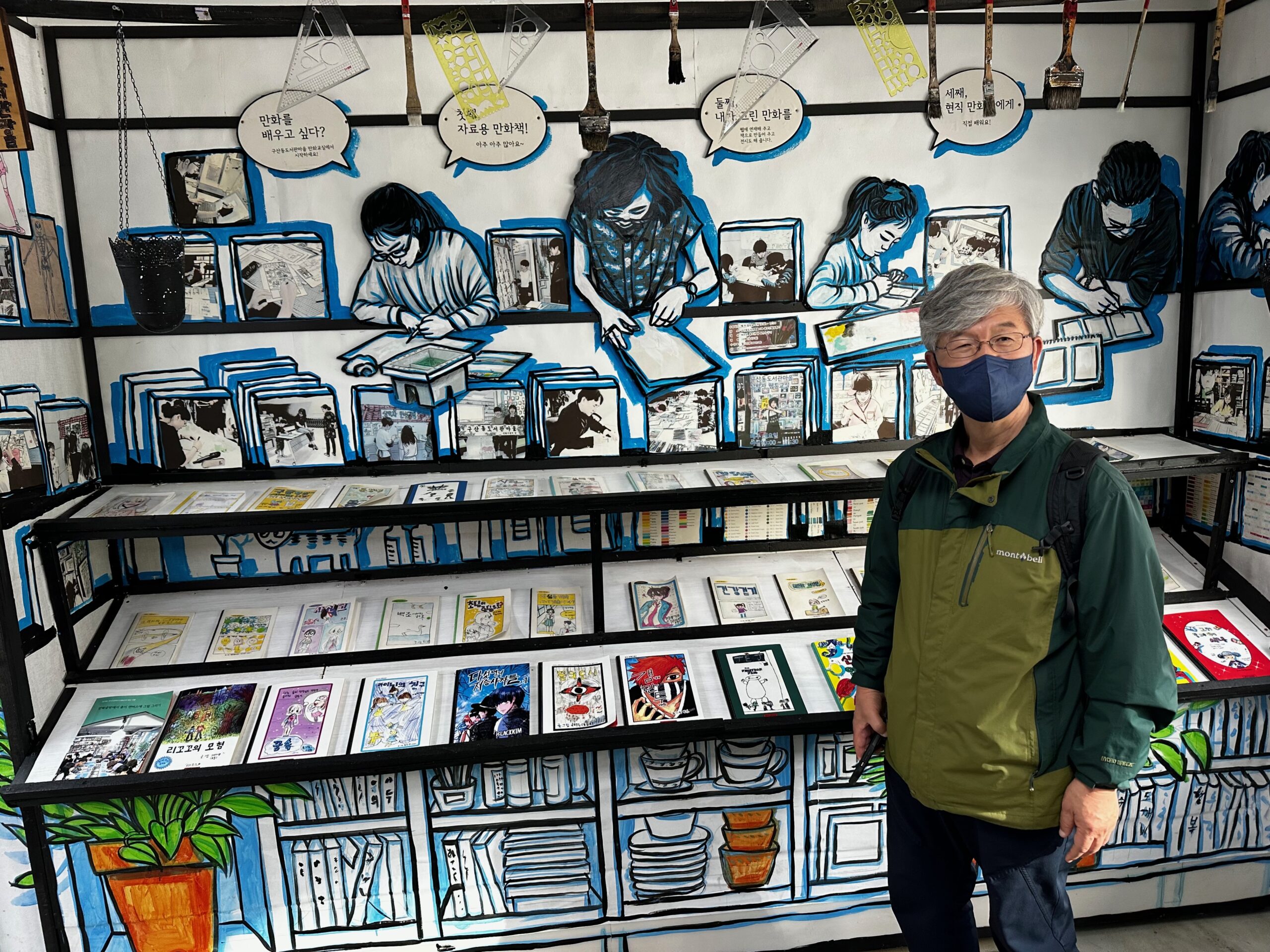
Gusan-dong Village Library, South Korea
Read more about the community-centered public libraries in South Korea.
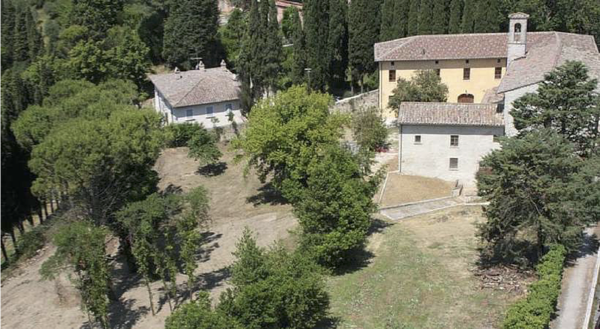


In Perugia, Italy the library looks like open gardens, hammocks, and a cedar grove planted in remembrance of those who fought for human rights.
Closets and Libraries
A room full of books is a closet, but an empty room with a librarian serving their community is a library.
Take a look again at Ranganathan’s 3rd and 4th laws: every book its reader and saving the reader’s time. It’s the basis for things like cataloging and classification (Ranganathan’s primary interest). It’s not enough to have a lot of materials, you have to be able to find what you need.
In most libraries that’s cataloging and shelving materials. They don’t just happen to be in alphabetical order by author last name. They don’t just happen to be classified as “692: Auxiliary construction practices.” It took the work of a librarian.
But it’s more than that. The fact that a library even collects materials on building practices is the work of a librarian meeting the needs and aspirations of the community. And therein lies the trick. Librarians (and library staff) working with communities make a library, not the other way around. Librarians may build collections, but only if it meets the mission.
The University of Texas Health San Antonio Dolph Briscoe Jr. Library has no physical collections save a room full of rare historical medical texts. The rest of the library is for studying, accessing digital resources, meeting with librarians, and it turns out, video conferencing.
Medical students at the university, must seek out internships for the practical part of their education. In the past that meant flying out to locations around the country. This system meant that most students could afford maybe an interview or two. It very much advantaged students of means who could do several site interviews. COVID changed that.
Now hospitals were conducting interviews via ZOOM and online. Instead of one or two sites, students could interview with 10 and 20. However, those students without means need a space and equipment connected to reliable high-bandwidth connections. In stepped the library. In San Antonio the physical manifestation of librarians serving their community wasn’t books, but spaces with cameras and good lighting.
In Perugia, Italy the library looks like open gardens, hammocks, and a cedar grove planted in remembrance of those who fought for human rights. In Columbia, South Carolina a library might look like a winding path studded with placards that tell a children’s story. In Chester England it is books interspersed with coffee bars and theaters in Storyhouse.
The point is that librarians don’t simply maintain a collection with a few services on the side (next corollary), but build and shape spaces – virtual and physical – that conform to the work of the library with people. Which is an excellent segue to my 4th corollary.
Bad Libraries
Bad libraries build collections, good libraries build services, great libraries build communities
I always cringe a bit when this quote shows up on social media. Because while it is normally a positive citation, it often draws the ire of some librarians who simply do not like either a) the implication that there are bad libraries, or b) that collections are a bad thing.
First, there is nothing that says that good and great libraries don’t or can’t build collections. It is a matter of focus. If librarians focus solely or disproportionately on the collection, that is bad. This shows up in a couple of ways. The first is obvious: acquisitions with little or no input from members of the community. Are you adding to a collection because of what is on the New York Times bestsellers, or that’s what the jobber sends? Bad. If you aren’t looking at circulations data, having conversations with the community, or looking at interlibrary loan data: bad.
If we are talking focus, what is the difference between bad libraries and good ones? Good libraries focus on users (more on that term in a second). That is, they evaluate the utility of the collection in relation to user needs. What do people want and need in terms of the collection, and how does that balance with all the other things the library does (reference, programming, digital resources, instruction, etc.). Here not only do we look at user data such as circulation and such, but the whole user experience.
Good libraries understand that any time you add value to a user experience you are proving a service. Shelving? Service. Cataloging? Service. Weeding? Service (to save the user time and eliminate rapid access to out of date information). I know all of these things are wrapped up as “collection,” but by breaking them apart you can better evaluate them, and better see how they contribute to learning and making meaning.
I pick the term “user” carefully in this part of the discussion, because I believe it is what separates good from great. You see a good library sees the collection as a service and therefore monitors and plans for its use. A great library sees the collection as only a tool to push a community forward, and more than that, they see the library itself as a platform for the community to produce as well as consume. The library member co-owns the collection and all the other services offered by the librarians. The library services are part of a larger knowledge ecosystem where members are consuming information yes (a user), but also producing, working, dreaming, and playing. That is the focus of a great library. They understand that the materials a library houses and acquires is not the true collection of a library – the community is.
So, do good, bad, and great libraries have collections? Yes, yes, and maybe. But great libraries realize that the collection is not what sits on the stacks, but the members and their worlds. The focus is on connection development, not collection development. Will there be collections developed? Probably, but that collection may be of links, digital scans, books, building materials, video production equipment, performance time on a stage, and/or experts.
Great libraries can have great buildings, or lousy buildings, or no buildings at all. Great libraries can have millions of volumes, or none. But great libraries always have great librarians who engage the community and seek to identify and help fulfill the aspirations of that community.
Excerpts from a blog post on the quote:
“Here is the tweet that led to this post:
‘Bad Libraries build collections. Good libraries build services (of which a collection is only one). Great libraries build Communities’
Due to character limits it was often re-tweed without the parenthetical:
‘Bad Libraries build collections. Good libraries build services. Great libraries build Communities’
Let’s face it, this is snappier, but it is also apparently more controversial. There were a number of responses along the line that good and great libraries must build collections too. I thought it was worth more than 140 characters to add some nuance and depth to the tweet, so here we are.”
Safe Spaces...Maybe
A library should be a safe space to explore dangerous ideas.
Here’s how most people repeat this corollary: “libraries are safe spaces, for dangerous ideas.” Honestly, that’s how I started using the phrase. However, as we have seen time after time, nothing automatically makes a library a safe space. It takes work.
In the 1950s in the US, libraries were not safe spaces for minorities. It took brave librarians and even braver activists to stand up and not only integrate libraries, but to make them into welcoming spaces (Wiegand & Wiegand, 2018). This work is more than who is in the building. Librarians are still (finally?) trying to balance collections by adding books about and featuring blacks, gays, trans, women, and other historically marginalized communities.
It is telling that in the explosion of materials challenges in the 2020s this balancing is seen as “woke” and countering “the norms of the community” (Kurtz, 2022). As if the collections don’t already have plenty of white heroes. These challenges are not only about trying to impose a loud minority view of the whole community; they are transforming libraries into dangerous spaces.
The second part of this corollary is about exploring dangerous ideas. This is ultimately about privacy (what a person shares) and confidentiality (what we as librarians keep and disclose). To create a safe space, one might think it is all about privacy. Don’t track people in what they are doing in the space (reading, accessing, creating). But it turns out that doing so might just create a very inequitable space.
In a recent collaboration between the University of Texas iSchool and the Austin Public Library, we tried to see if the digital hold system of the library was leading to inequitable distribution of resources. That’s a fancy way of saying, could folks of means use online tools to get a hold of valuable resources over those of less means and digital literacy. The library circulated WIFI hotspots for example. Were these going to people who needed basic internet access, or did it go to folks with fine internet access (hence their ability to use a digital hold system) who wanted hotspots for convenience (on vacations for example)?
The potential answer to this question has implications beyond just hotspots. The Austin Public Library has a floating collection. When a book (or hotspot) from one branch moves to another branch to fill the hold, it stays at the second branch. Meaning that over time, one branch may end up with more best sellers, or loaner laptops.
The problem is, while the question and analysis are pretty straightforward, the data simply aren’t there. To ensure privacy, who made the hold, or even where the hold went, was not being captured. Moreover, the socioeconomic status of the requester is unknown. Trying to use surrogates like city housing surveys or public transportation usage, may be suggestive, but it is far from conclusive.
So, building a safe space around privacy alone, may lead to inequities, that ultimately make the space, well, less safe. Serving your community may mean a library determining equity is of such importance that another approach to privacy must be taken beyond simply not collecting the data. Can disconnected identifiers be used to anonymize data? Can spot data collection (with member informed consent) be used to check assumptions? If yes, does the library have available expertise to do such data collection and analysis?
This expertise comes from formal education programs that should include research methods. But it also comes from close partnerships with the ethical AI community. It also comes from active partnerships with industry that so often favors monetization over privacy. Making safe spaces to explore dangerous ideas doesn’t mean ignoring the dangers, it means confronting them, and seeking to bring light to dark corners.
Conclusion
In the United States library leaders often talk about libraries as more than books. I’ve never been a fan of this line. It implies that things the library does beyond books are still build on the foundation of materials. Yet the foundation of libraries should be the community libraries are seeking to serve. Ranganathan’s words talked about books and readers, but the spirit of his work was in service and communities.
He wrote that a library is a growing organism. That growth does not happen automatically, nor is it always positive. Librarians steward that growth to match and support communities. IN doing so they need to be guided by mission and aspirations.
References
Bechtel, J. M. (1986). Conversation, a New Paradigm for Librarianship? College and Research Libraries. 47 (3), 219-24.
Desmond, C.P.Y. (2019). Key Takeaways — Gusan Dong Village Library. Available: https://jcmadsociallab.medium.com/key-takeaways-gusan-dong-village-library-b5ae206f4824
Elmborg, J. K. (2011). Libraries as the Spaces Between Us: Recognizing and Valuing the Third Space. Reference & User Services Quarterly, 50(4), 338–350. http://www.jstor.org/stable/20865425
Kurtz, S. (February 24, 2022). The Battle for the soul of the library. New York Times.
Lankes, R. D. (2011). The Atlas of new librarianship. MIT Press, Cambridge, MA.
Lankes. (2016). The new librarianship field guide. MIT Press, Cambridge, MA.
Gorman, M. (1998). The five laws of library science: Then and now. School Library Journal, 44(7), 20-23. Retrieved from http://ezproxy.lib.utexas.edu/login?url=https://www.proquest.com/trade-journals/five-laws-library-science-then-now/docview/211729599/se-2
Pundsack, K. (2015). Customers or Patrons? Public Libraries, 54(1), 41–44.
Ranganathan S. R. (1931). The five laws of library science. Madras Library Association; E. Goldston.
Simpson, Carol (April–May 2008). “Editor’s notes: Five laws” (PDF). Library Media Connection. 26 (7): 6. Archived (PDF) from the original on 29 August 2018. Retrieved 27 February 2020.
Wiegand W. A. & Wiegand S. A. (2018). The desegregation of public libraries in the jim crow south : civil rights and local activism. Louisiana State University Press.
Wiegand W. A. (2017). Part of our lives : a people’s history of the American public library ([Oxford University Press paperback edition]). Oxford University Press.
